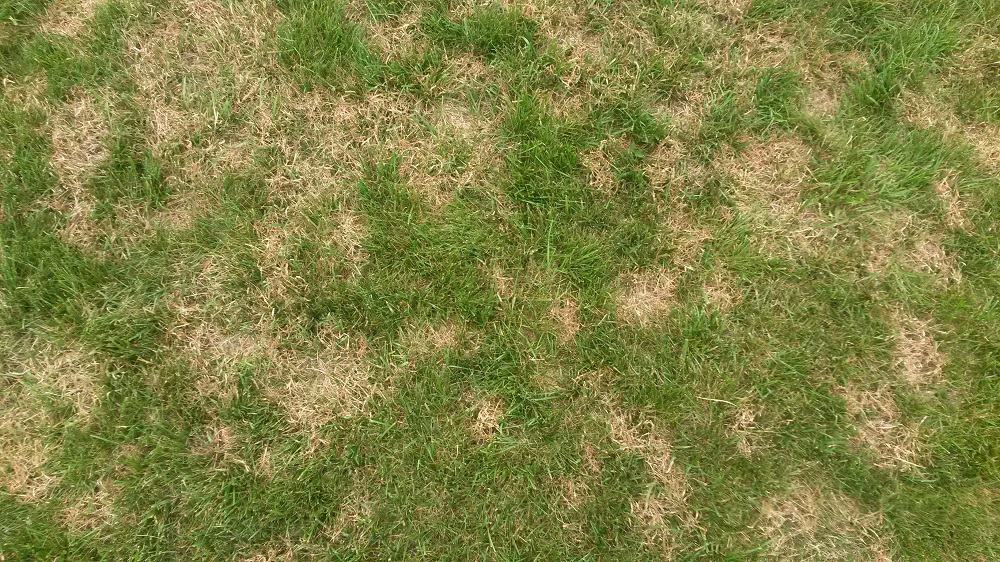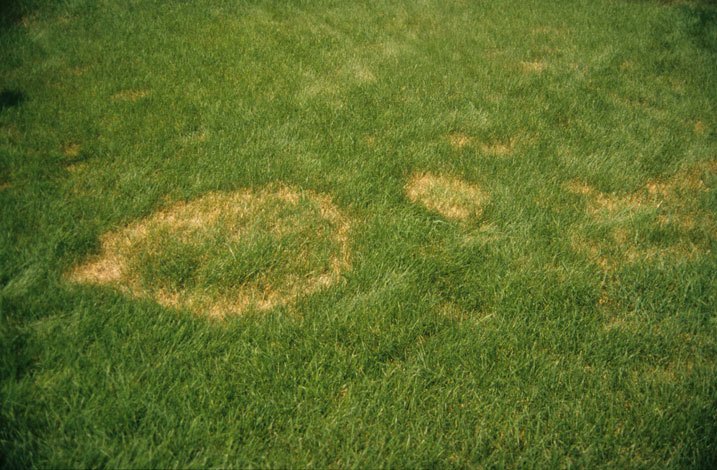20 Jul Lawn Fungus and How To Combat
 Brown patch will show signs of a circle or semicircle pattern. Long irregular spots light tan or whitish in color will be accompanied by dark brown or purplish-black margins.
Brown patch will show signs of a circle or semicircle pattern. Long irregular spots light tan or whitish in color will be accompanied by dark brown or purplish-black margins.
 Summer patch will also show signs of a circle or semicircular patterns. Turf within will be prone to wilt, grow poorly, or sing into the turf.
Summer patch will also show signs of a circle or semicircular patterns. Turf within will be prone to wilt, grow poorly, or sing into the turf.
Damage from lawn fungus will become evident in Nebraska lawns during the hot and humid days of summer. Although, there is not a lot that can be done once damage has occurred, proper maintenance practices can help prevent the spread of fungus and keep it from happening again next season. How and when you mow, fertilize, aerate and irrigate your lawn all play factors in the spread of fungus in turf areas. Read more to learn more about best practices to help keep your lawn hardy and green all season long (and what to do if fungus has attacked your lawn)!
Brown patch is usually found on bluegrass, tall fescue, perennial rye and zoysia grass. Symptoms will begin with dead grass blades forming a circle or semicircle pattern in your lawn. You will see long irregular spots that are light tan or whitish with the outside of the spot being dark brown or purplish-black. Hot humid weather is the best breeding ground for Brown Patch, as well as poorly drained soil and evening waterings.
Summer patch occurs on Kentucky bluegrass and fine-leaved fescues. It is caused by a fungus which lives in the soil and attacks the roots leaving a dark brown to black root. You will find circles or semicircles of grass light tan in color and matted looking. While the center can have healthy grass (often called frog-eye) many times the turf within will be prone to wilt, grow poorly, or sink in the turf stand. Summer patch generally occurs during July and August.
Managing most lawn fungus comes from good lawn practices. Typically, lawn fungi appear when moisture has been in the grass blade for too long. To help combat lingering water try watering your lawn twice a week. Each watering should consist of ½ inch of water. The goal is to get down to the roots, and allow the grass blades to dry out before long. Opposed to afternoon and night watering, the best time to water your lawn is 4 – 5 am. This allows the water time to get to the roots and dry during the day. Afternoon watering will evaporate before the water gets to the roots and night will let the grass stay wet too long. You can measure the water applied by sticking a tuna can in the lawn while the irrigation is running.
Another simple way to combat lawn fungus is by mowing every week throughout the summer season. When you mow take care to mow at 3 to 4 inches off the ground. Using a dull mowing blade could also leave your lawn susceptible to infection, because the dull blade shreds the ends of the grass creating large wounded areas for fungal spores to enter.
Fungus is gross no matter how you spin it. But, before we wrinkle our noses and close our eyes, take these easy steps to ensure your lawn fungus stays under control. If the fungus has killed a section of the lawn, it will need re-seeded in the fall. Call the Sun Valley Landscaping office and 402-932-5704 if you need help treating your lawn.


